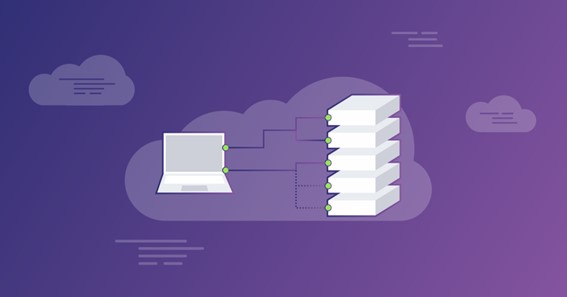Caching is the process of storing data files in a temporary storage location so that it can be accessed quickly. Even though caching is not a one-size-fits-all solution for different businesses, it’s a cost-effective solution that facilitates fast response. The cache is a temporary storage location that stores copies of files or data. The data stored in the cache is highly used in correlation with software components.
Caching focuses more on speed, unlike traditional databases that focus highly on capacity. That is why it has a track record of helping companies improve their systems’ performance. Below are different types of caching and their differences.
Distributed caching
Distributed caching is mainly meant for the big organizations that handle complex data challenges. It allows the organizations’ web servers to pull and store data collected from distributed servers’ memory. Implementing distributed caching will allow the webserver to serve pages without running out of memory. Smart caching is one of the most scalable distributed caches that help accelerate your digital applications and improve real-time reporting.
This caching is an essential ingredient of scalable systems. You don’t need to reconstruct the cached results for all the requests, and the system’s capacity is increased. As a result, the system can handle greater workloads. The distribution can be made of a cluster of cheap machines that only serve the memory regularly without disrupting the users.
That is why big companies can return results very fast even when they have hundreds of simultaneous users. Most of these companies use distributed caching together with other techniques to infinitely store data in the memory because retrieving data from memory is faster than from the database.
Data caching
This type of caching is vital when dealing with database-driven programs or customer management solutions. Data caching is primarily used for frequent calls to store data that doesn’t change rapidly. It helps the system of the organization to load faster and thus enhances the users’ experience. Extra trips to the database to retrieve data sets that have no changes are not prioritized in data caching.
Data is stored in a memory on the server, which offers the fastest way to retrieve information stored on the web server. This boosts work productivity and the efficiency of the overall system. Remember that the database is often faced with challenges, and the fewer the calls, the better. In rare cases, database solutions may attempt to cache the used queries to reduce turnout time regularly.
After the cache data is altered, it’s then cleared. As a result, the customer management systems’ front end will always have the most frequent data after any alterations. Also, there will be no need to hit the database every time a user hits a specific page. Unfortunately, overusing the data caching can lead to several challenges as you may create a loop constantly adding and removing data from the cache memory.
Web caching
Web caching works differently from all other types of caching. It helps to reduce the overall network traffic and latency in the organization’s system. This caching is controlled on a much larger scale at the individual user level. When controlled as a proxy or gateway, the organization can share cached information across a large group of users.
Domain Name Server data is commonly cached data that can be used to resolve domain names to IP addresses and mail server records. This data doesn’t change frequently and is usually cached for longer periods by the proxy or gateway servers. Thus, users can navigate gate pages they have visited quickly.
The feature that controls the navigation is usually free to take advantage of. Though, it’s highly overlooked by most hosting companies and developers. In most cases, you will require cache-control and ETag headers to instruct the user browsers to cache specific files for a certain period.
Output/ application caching
Most customer management systems are designed with built-in cache mechanisms even though most users don’t understand them effectively and often ignore them. Before you implement output caching, you should understand the data cache options that are available and when to implement them.
Application caching drastically reduces the organization’s website load time and server overhead. Unlike data caching, which often stores most of the data in raw data sets, output caching utilizes server-level caching techniques that can even cache basic HTML.
This could be per page of data, module data, parts of headers/footers, or HTML markup. You can use this caching technique on multiple sites and customer relationship management systems to reduce the load time by more than 50%.
How caching improves data governance
One of the main benefits of the in-memory cache is facilitating faster access to data without increasing the load on the main data stores. Caching improves the performance, availability, and scalability of different applications. You can apply caching to other use cases like operating systems, content delivery networks, web applications, or even databases.
Data governance is improved when data is broken down into manageable parts, providing a centralized data architecture. As a result, you will enhance the quality of the data and lower the data management costs. With caching, you can get hundreds of thousands of input/output operations in a single instance, which drives the overall cost of the whole process down.
One of the main challenges facing modern business applications is dealing with the time of a surge in application traffic. With caching, you can achieve predictable performance by utilizing the high-throughput in-memory cache. You will also get clear insights from the data in the organization that can help a lot in decision-making.
Caching also helps to eliminate database hotspots. In most organizations, there is a likelihood that a specific data subset is likely to be accessed frequently. In this case, you need to over-provision your database resources based on the throughput requirements for the frequently accessed data.
Conclusion
When implementing caching, there is a need to understand the validity of the data being cached. As discussed above, you use four main types of caching to improve your organization’s performance. You can use either distributed caching, data caching, web caching or application caching to ensure easy retrieval of the stored data without increasing the load on the primary data.







